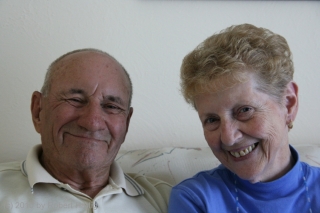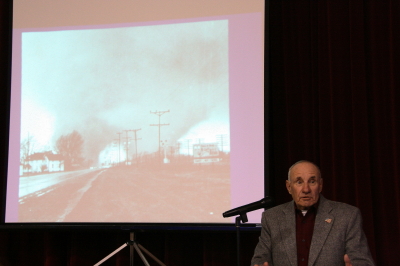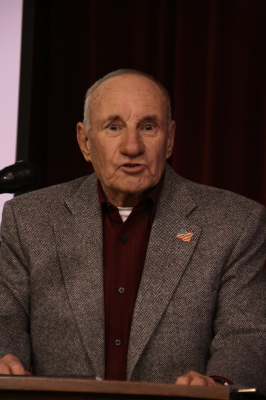On April 11, 1965, Elkhart Truth photographer Paul Huffman parked his vehicle by the side of US 33 northwest of Goshen, Indiana, and began snapping pictures of a tornado passing within a half-mile of him. One of those images, captured as the twister was in the process of devastating the Midway Trailer Park, became what is probably the most famous tornado photograph ever taken, and the icon of the nation’s second deadliest large-scale tornado outbreak. Paul’s image of twin funnels straddling the highway is instantly recognizable to anyone familiar with the 1965 Palm Sunday Outbreak.
Like countless weather weenies, I’ve been fascinated with Paul’s photo. As a storm chaser, I’m familiar with multiple-vortex tornadoes. Today meteorologists understand that they’re fairly common. Yet multiple vortices take all shapes, sizes, and behaviors, and I’ve always been on the lookout for something that seemed to approximate what was probably happening in Paul’s photograph (really his series of photographs depicting a single funnel undergoing vortex breakdown into the infamous “twins”).
Just a few minutes ago, I came across a new YouTube video that is the closest I’ve ever seen to what the Midway tornado–and very likely the one that hit Dunlap 45 minutes later–may have been like. I don’t normally feature YouTube videos in this blog because I hate discovering that the video I had included in a post a year ago no longer exists. But besides being truly impressive, this clip is just too strikingly reminiscent of Paul’s historic photo to pass by.
The video was shot just yesterday in southeast Oklahoma by storm chasers Marc Austin, Robert McIntyre, and Gabe Garfield. At 1:08 into their clip, you can see two large twin funnels embedded in the parent circulation. It’s a spectacular display, and my hat is off to these guys for catching the storm of the day. Tragically, the tornado killed at least one person and caused significant damage in the towns of Tushka and Atoka.
The system that produced the Tushka/Atoka tornado and a number of others yesterday is moving east today. Mississippi and Alabama lie within a moderate risk, with a good possibility of strong to violent tornadoes. The storms are ongoing this morning as I write, and a whole day lies ahead of them for moisture and instability to build across Dixie Alley. It’s not a pleasant prospect. Let’s hope that the damage will be minimal and no more lives will be lost.




